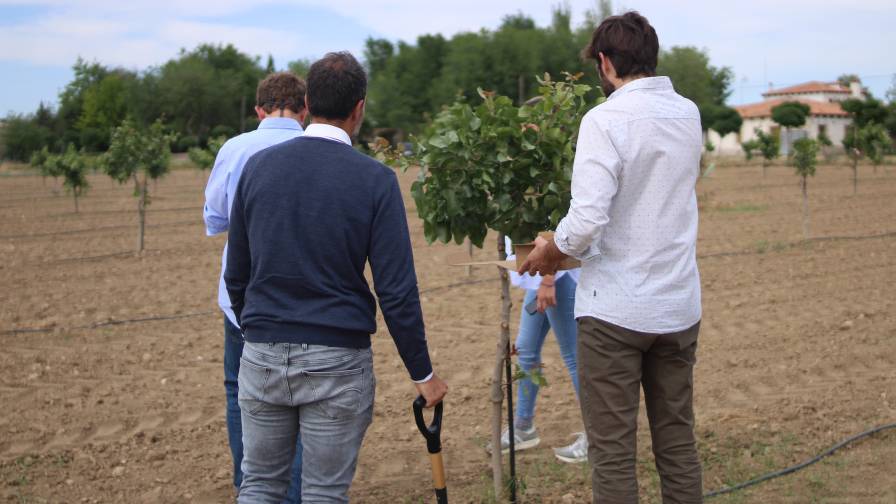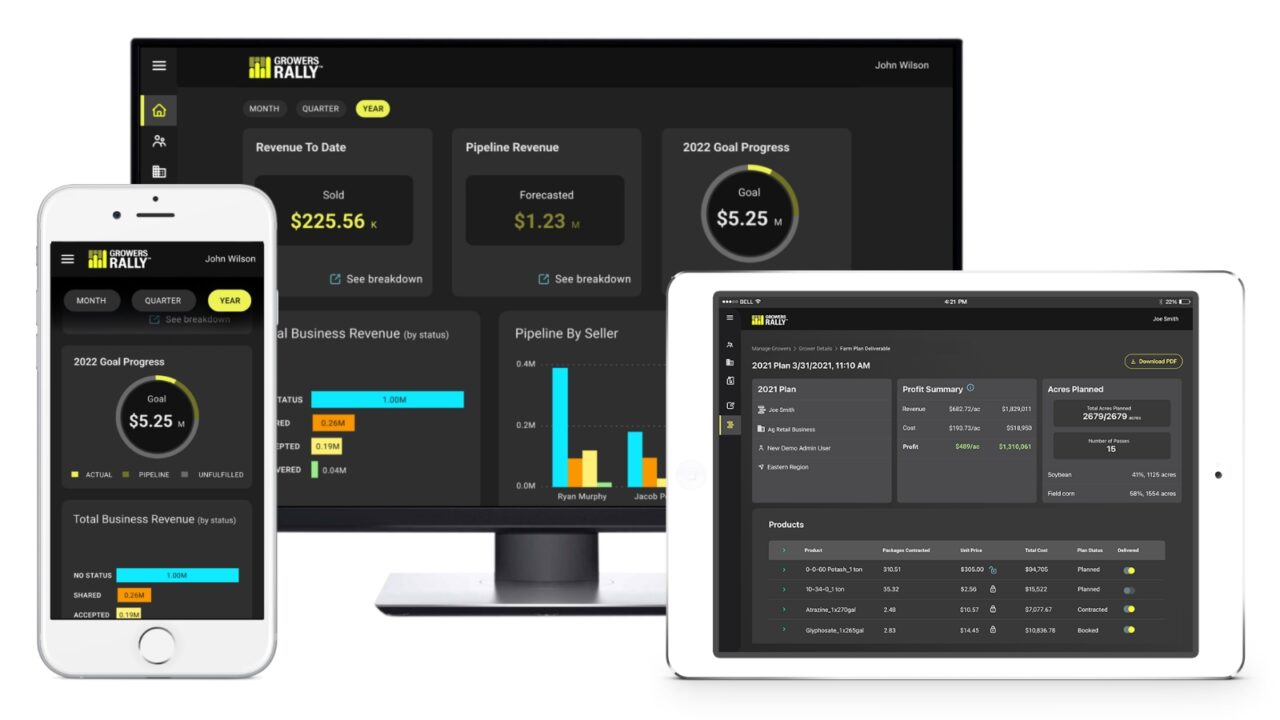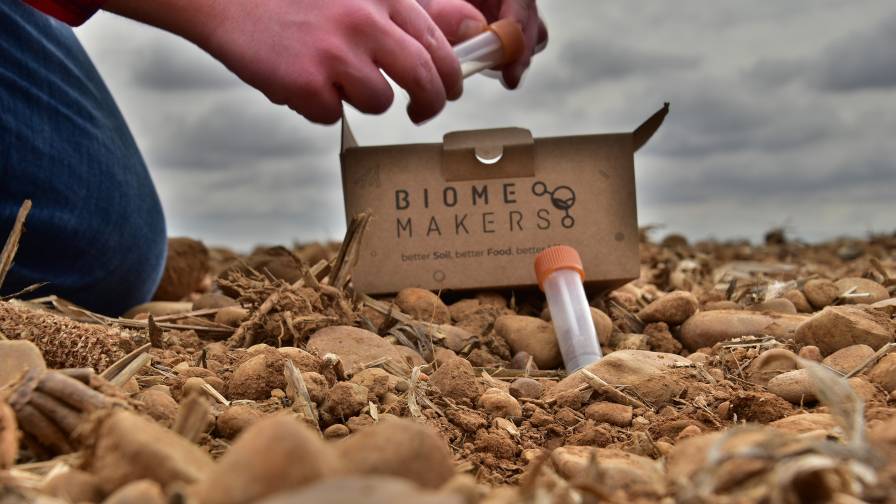Scouting Tools Continue to Deliver Increased Agronomic Insights
Sometimes it seems like ag is less about what’s happening in the field and more about what’s happening on a desk. The amount of data available is already staggering and continues to grow, and much of it is being collected and directed through scouting tools. Of course, all the data that’s being collected is so that what is happening in the field is more efficient and effective.
“There is a wider array of data that is available to the scout from soil moisture, aerial imagery for plant health and other remote sensing data,” says Grey Montgomery, DTN’s Head of Ag Product and Operations. “There are also newer in-field tools, such as leaf analysis and intelligent irrigation, that can be used in the field for instant results instead of waiting for the lab. Combining this with the best software offerings can help scouts target the areas of concern faster, and just as importantly, make recommendations that are accurate. This gives growers more time to make confident growing decisions and potentially realize a better return on their investment.”
BRANDT’s Brian Dintelmann, Technical Agronomist, agrees scouting tools are a positive for the industry and describes the market this way: “Diverse and resourceful. Scouting tools help consultants and growers’ isolate issues within a field to help make in-season and/or future management decisions. Whether it be the tried-and-true scouting tools, new imagery tools or a combination of both, users have more access than ever to help their scouting practices.”
Demand
“There’s been a high demand as farms get larger, the need and opportunity to more precisely manage each acre is greater,” says Tryston Beyrer, Crop Nutrition Lead, The Mosaic Company. “Documentation of various inputs, pests, and implement passes can help compile more data than what many know what to do with. This creates a large opportunity for precision ag and other platforms to help manage data to better fine tune input applications and where to implement specific IPM practices. Application windows of inputs such as fertilizer in the fall and spring seem to get more compressed each year and being better to manage data from crop scouts, soil and tissue samples can bring tremendous value to growers. Farms are becoming more efficient and those that are not using on-farm data and monitoring their crops through the season are less likely to be competitive and manage their crop to its full potential.”
Like much of the world, agriculture. including scouting tools, are looking at ways to embrace artificial intelligence.
“In 2023, scouting tool technology has continued to advance,” says John Appel, Head of Commercial Sales, NA, Biome Makers. “Automation and tools for integrating various data types have provided a robust framework for artificial intelligence and machine learning, revolutionizing scouting tools in agriculture. These tools now offer more sophisticated data analysis and interpretation capabilities, enabling farmers and advisors to gain deeper insights into their soil microbiome, nutrient management, and pathogen risk, among other factors. Our BeCrop technology has been enhanced with features that cater to farmers’ specific soil problem questions, making it even more valuable in addressing individual challenges. This update also makes it easier for crop advisors and ag retailers to provide targeted recommendations based on deficiencies indicated in the soil health diagnostic reports.”
Scouting Tool Changes
“Over the years, scouting tools have evolved in numerous ways. For example, advancement in mobile technology has propelled the market from traditional book ID guides to mobile friendly apps to help identify weeds, insects, or nutrient deficiencies,” says BRANDT’s Dintelmann. “More recently, photo recognition technology has nearly removed the guessing game in some of these areas. The use of drones has allowed growers and consultants a bird’s eye view of their fields to look for patterns of damage. Today scouting tool technology is advancing with drone and satellite imagery technology. Better in-season imagery technology is allowing practitioners access to precise data that cuts down on time spent in a field diagnosing or finding a problem. These tools also allow imagery data to be overlaid with field operation layers such as planting or harvest to help make agronomic decisions.”
It’s that integration of various tools that have helped scouting tools move from helpful to essential.

Biome Makers team soil sampling.
“Crop scouting in agriculture has been transitioning from traditional, manual field inspections to digital methods,” says Biome Makers’ Appel. “Modern scouting tools incorporate multiple data streams, AI, IoT, UAVs and satellites enabling farmers to monitor and analyze their fields precisely and efficiently in real-time. This shift has reduced costs, minimized labor, and improved resource allocation, while also optimizing input use and productivity.”
If the past few years have shown anything, it’s how interconnected the industry is.
“Many crop protection chemicals and fertilizers experienced supply challenges, which led to higher pricing,” Appel says. “This impacted grower profitability significantly and put a spotlight on the need to optimize the application of these products, which in turn has led to increased demand in soil biology analysis.”
With all this data, scouts are able to provide much more valuable insight for their customers.
“Advances in scouting tool technology allow scouts to do so much more and with greater likelihood of success than what was possible 10 years ago,” DTN’s Montgomery says. “First, modern scouting technology eliminates significant time in manual input and in creating reports. Second, the combination of massive amounts of imagery and data science in modern scouting tools allows scouting to become more precise and accurate, which builds confidence for scouts in their recommendations and helps growers reduce risk and realize opportunities much quicker.”
Future Trends
“Some common trends driving the scouting tool market would be integrated plug and play, or cross communication between multiple devices,” says Mosaic’s Beyrer. “Redundantly entering data into multiple platforms is time consuming and prone to errors. Having the ability of a scouting platform to integrate across multiple brands of platforms is valuable. There are also several emerging new tools such as sensors that can monitor crop nutrient cycling, disease development and several other crop and environmental factors that may allow producers and scouts to use high resolution data to make informed VRT applications across fields in-season.”
As with any tool it’s about maximizing return on investment, and scouting tools are designed to do exactly that.
“With many commodity crop prices recently declining from near record highs the past couple of years, many growers will likely be reevaluating how their crop management plans and budgets to identify where costs can be saved,” says Beyrer. “Regular crop scouting can help growers prioritize where they invest their money as if they have observed a problem, they know that is an area not to cut costs or may be an opportunity to invest to fix those yield limiting factors.”
Weather, political issues, pandemics, regulatory changes are only a few of the variables that influence grower profits. The more quickly and accurately growers can react to the variables they can control (or account for) the more likely they are to safeguard any profits.
“The scouting tools market is saturated with good platforms that can accommodate most budgets,” Montgomery continues. “The question now turns to efficiency. Since most of the platforms on the market excel at one feature, most scouts must work across multiple platforms to derive one report, which reduces potential productivity. This is why we introduced DTN Agronomy. One of the major pain points that we were hearing is that scouts were working within multiple apps and platforms to create recommendations for one customer. DTN Agronomy delivers many insights in one interface.”








